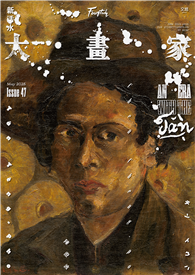In Enlightenment Europe, a new form of pantomime ballet emerged, through the dual channels of theorization in print and experimentation onstage. Emphasizing eighteenth-century ballet’s construction through print culture, Theories of Ballet in the Age of the EncyclopÃ(c)die follows two parallel paths - standalone treatises on ballet and dance and encyclopedias - to examine the shifting definition of ballet over the second half of the eighteenth century.
Bringing together the EncyclopÃ(c)die and its SupplÃ(c)ment, the EncyclopÃ(c)die mÃ(c)thodique, and the EncyclopÃ(c)die d’Yverdon with the works of Jean-Georges Noverre, Louis de Cahusac, and Charles Compan, it traces how the recycling and recombining of discourses about dance, theatre, and movement arts directly affected the process of defining ballet. At the same time, it emphasizes the role of textual borrowing and compilation in disseminating knowledge during the Enlightenment, examining the differences between placing borrowed texts into encyclopedias of various types as well as into journal format, arguing that context has the potential to play a role equally important to content in shaping a reader’s understanding, and that the EncyclopÃ(c)die mÃ(c)thodique presented ballet in a way that diverged radically from both the EncyclopÃ(c)die and Noverre’s Lettres sur la danse.| FindBook |
有 1 項符合
Theories of Ballet in the Age of the Encyclopédie的圖書 |
 |
Theories of Ballet in the Age of the Encyclopédie 作者:Sabee 出版社:Voltaire Foundation in Association with Liver 出版日期:2022-02-28 語言:英文 規格:平裝 / 192頁 / 普通級/ 初版 |
| 圖書館借閱 |
| 國家圖書館 | 全國圖書書目資訊網 | 國立公共資訊圖書館 | 電子書服務平台 | MetaCat 跨館整合查詢 |
| 臺北市立圖書館 | 新北市立圖書館 | 基隆市公共圖書館 | 桃園市立圖書館 | 新竹縣公共圖書館 |
| 苗栗縣立圖書館 | 臺中市立圖書館 | 彰化縣公共圖書館 | 南投縣文化局 | 雲林縣公共圖書館 |
| 嘉義縣圖書館 | 臺南市立圖書館 | 高雄市立圖書館 | 屏東縣公共圖書館 | 宜蘭縣公共圖書館 |
| 花蓮縣文化局 | 臺東縣文化處 |
|
|
圖書介紹 - 資料來源:博客來 評分:
圖書名稱:Theories of Ballet in the Age of the Encyclopédie
內容簡介
作者簡介
Olivia Sabee is assistant professor of dance and member of the committees on comparative literature and interpretation theory at Swarthmore College. Her essays on eighteenth- and nineteenth-century French and Italian dance and literature have appeared in Eighteenth-Century Studies, MLN, Romance
Studies, and Dance Chronicle.
Female Playwrights and Applied Intersectionality in Romanian Theater
Kinetic Cultures: Modernism and Embodiment on the Belle Epoque Stage Volume 32
Diaghilev’s Empire: How the Ballets Russes Enthralled the World
The Lighthouse of Stalingrad: The Hidden Truth at the Heart of the Greatest Battle of World War II
Into Siberia: George Kennan’s Epic Journey Through the Brutal, Frozen Heart of Russia
Becoming Foucault: The Poitiers Years
Anti-Fascism and Ethnic Minorities: History and Memory in Central and Eastern Europe
Habsburg Galicia and the Romanian Kingdom: Sociocultural Development, 1866-1914
Russia and Japan in the Sea of Okhotsk: A Global History of Maritime Travel and Cultural Encounters, 1600-1900
The First Russian Radical: Alexander Radishchev 1749-1802
Kinetic Cultures: Modernism and Embodiment on the Belle Epoque Stage Volume 32
Diaghilev’s Empire: How the Ballets Russes Enthralled the World
The Lighthouse of Stalingrad: The Hidden Truth at the Heart of the Greatest Battle of World War II
Into Siberia: George Kennan’s Epic Journey Through the Brutal, Frozen Heart of Russia
Becoming Foucault: The Poitiers Years
Anti-Fascism and Ethnic Minorities: History and Memory in Central and Eastern Europe
Habsburg Galicia and the Romanian Kingdom: Sociocultural Development, 1866-1914
Russia and Japan in the Sea of Okhotsk: A Global History of Maritime Travel and Cultural Encounters, 1600-1900
The First Russian Radical: Alexander Radishchev 1749-1802
|










